What is poison ivy?
Poison Ivy (Toxicodendron radicans), is a perennial woody plant that grows as either a low shrub or a climbing vine. Poison ivy is native to North America and is common in Wisconsin, growing in pastures, roadside ditches, fence rows, wooded forests, beaches and parks.
Contact with poison ivy can lead to skin rashes, skin blisters, or other allergic reactions.
What does poison ivy look like?
Poison ivy has alternate leaves, and each leaf has three leaflets. The middle leaflet has a short stalk and is larger than the two other leaflets. Leaflets are variable in shape but are typically oval with pointed tips. The margins (edges) of leaflets can be smooth, serrated (i.e., resemble a saw blade) or lobed. In late summer, poison ivy produces clusters of whitish berries. These berries are eaten by birds, and the seeds inside are spread through bird droppings.
Other common plants can be confused with poison ivy. These plants and the characteristics that distinguish them from poison ivy are outlined in the table below.
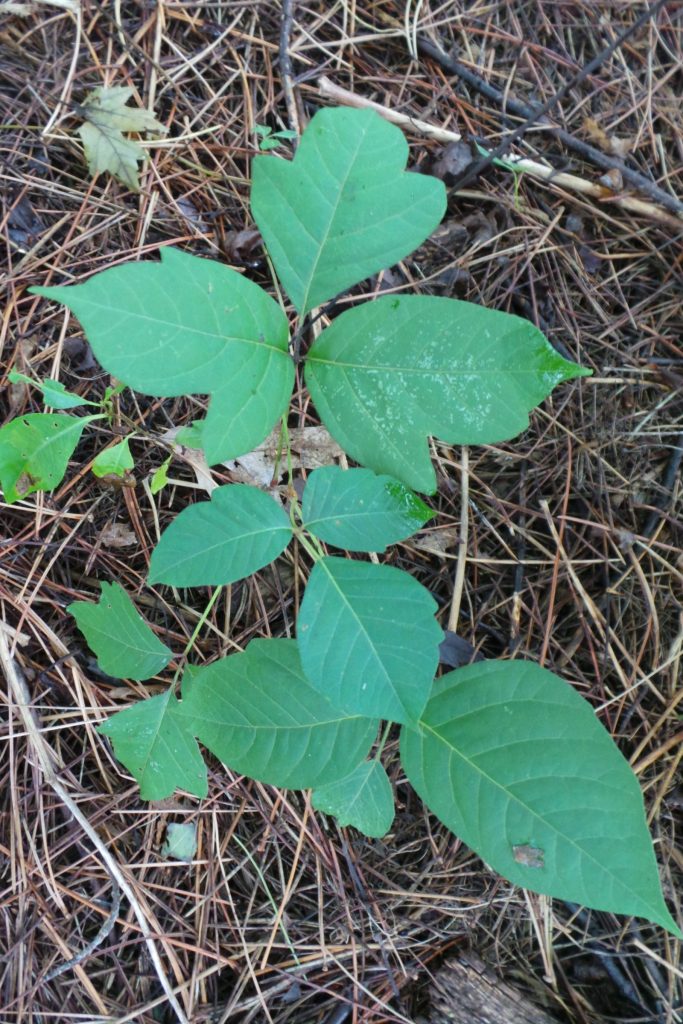
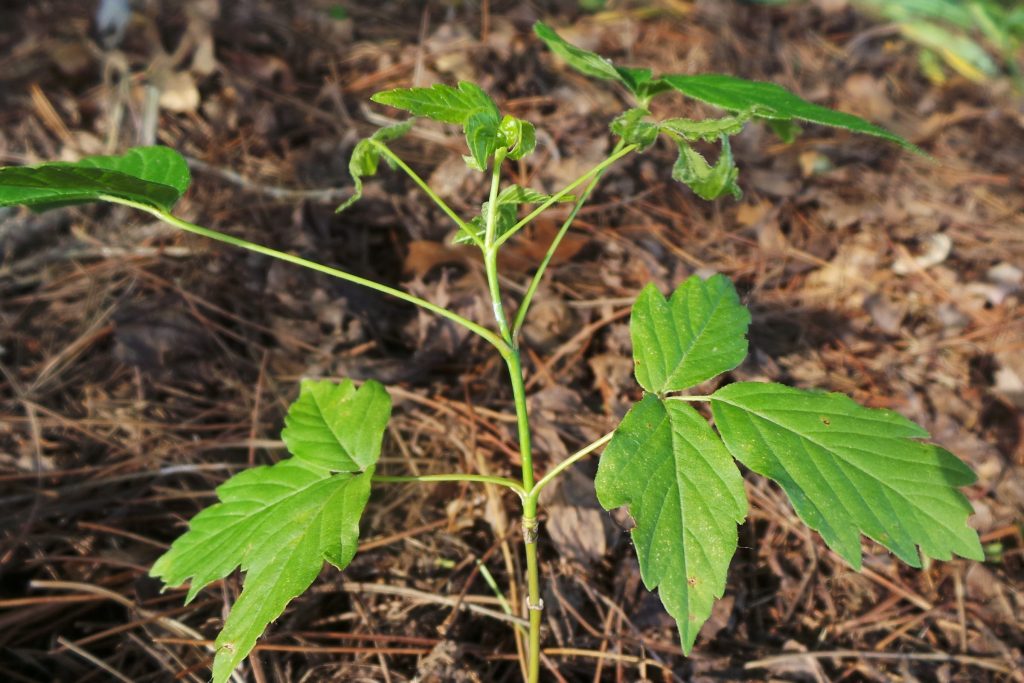
Common Poison Ivy Look-Alikes
| Look-Alike Species | How to Distinguish from Poison Ivy |
|---|---|
| Boxelder (seedlings) | Opposite branching; 3+ leaflets per leaf |
| Ash (seedlings) | Opposite branching; 3+ leaflets per leaf |
| Virginia creeper | 5 leaflets per leaf (newly emerged leaves may have fewer) |
| Wild sarsaparilla | 3 leaves at the top of stem; each leaf with 3-7 leaflets |
| Raspberry/blackberry | 3+ leaflets per leaf; spiny stems |
| Clematis/virgin’s bower | Opposite branching; side leaflets with obvious stalks |
| Hog peanut | Leaves without teeth or lobes; weak stemmed |
| Jack-in-the pulpit | Leaves with 3 leaflets; leaflets all stalkless |
| Wild strawberry | Leaves with 3 leaflets; leaflets all stalkless |

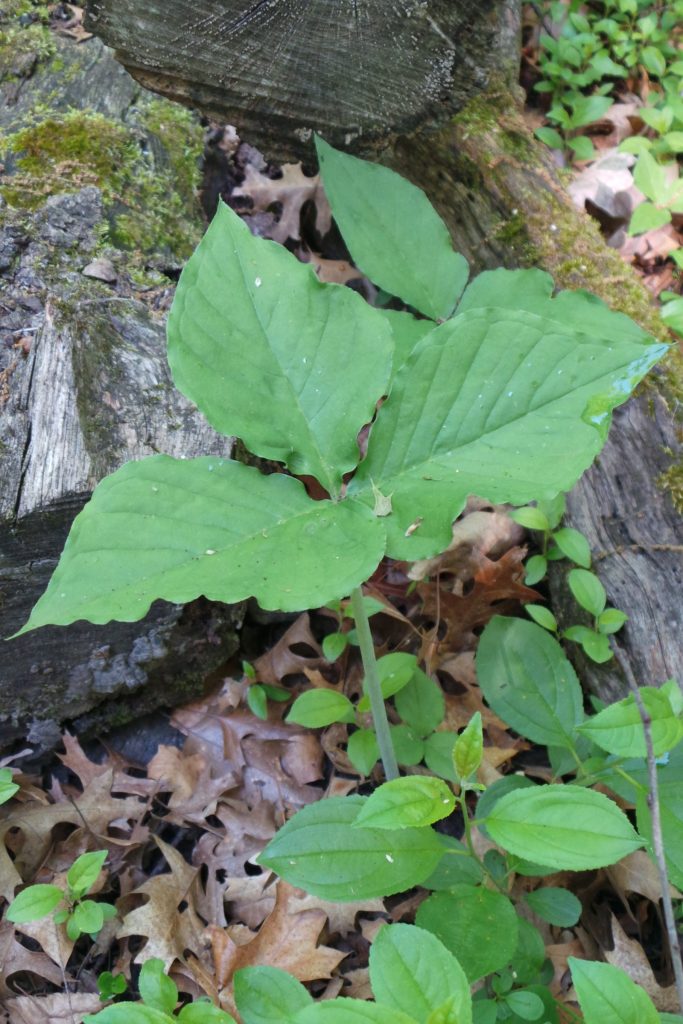
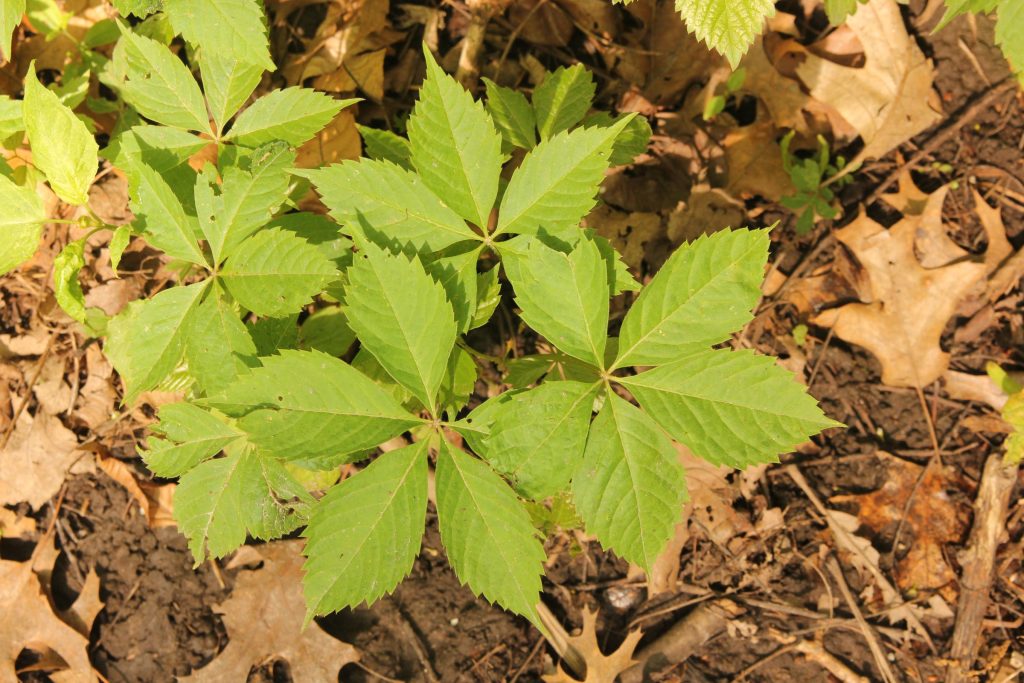

Why is poison ivy a problem?
All parts of poison ivy plants (including leaves, stems and roots) produce a resinous oil called urushiol that can cause severe itching, inflammation and blistering. The oil can be spread by anything that comes in contact with poison ivy including garden tools, clothing, boots or pets. Urushiol is present not only in living poison ivy plants but can remain active in dead plants for up to two years. Skin sensitivity to poison ivy can vary from person to person. If you burn poison ivy, the vaporized oil that is released can cause severe systemic allergic reactions if inhaled.
How do I avoid or reduce problems associated with poison ivy?
Learn how to identify poison ivy and avoid contact with the plant whenever possible. If you will be working in an area where poison ivy is likely to grow, wear long pants with boots, a long-sleeved shirt and gloves to help reduce exposure. In addition, you may want to use a poison ivy preventative lotion that can provide additional protection. After working in a poison ivy-infested area, carefully remove and wash your clothing with hot, soapy water. Use sanitary wipes to clean gardening tools or other items that may have come in contact with poison ivy plants.
If you believe you have come in contact with poison ivy, immediately wash any potentially exposed skin with regular soap under cold, running water. Avoid using complexion soaps as these types of soaps tend to spread urushiol on the skin and can make the problem worse. Poison ivy cleansing products (e.g., Tecnu skin cleanser) can help remove urushiol from skin if used within four to eight hours of exposure. Magnesium sulfate containing skin products (e.g., Dr. West’s Poison Ivy Wash) can also help to detoxify urushiol and ease itching. If you believe you have inhaled urushiol vapor, immediately contact a physician for advice.
If you believe your pet has been exposed to poison ivy, immediately bathe them using a pet-safe shampoo to remove urushiol residues.
How can I control poison ivy?
Herbicides containing the active ingredients glyphosate and triclopyr are effective in controlling poison ivy if used according to the label directions. Use foliar sprays to spot treat shrub-form poison ivy plants or vining poison ivy growing on inert objects (e.g., fences), but only apply treatments after leaves are fully expanded and plants are actively growing (i.e., summer and early fall). Do not apply foliar sprays to poison ivy growing on trees and shrubs, as the herbicide may damage these supporting plants. Alternatively, at any time of the year, cut poison ivy stems near the soil surface and paint the stumps with a more concentrated herbicide formulation. Be sure to read the instructions on the label of whichever herbicide you select for details on how to use the product in the safest and most effective manner possible.
When removing poison ivy plants, collect all of the above ground plant parts. Also, be sure to rake the ground to collect any leftover poison ivy berries, leaves, stems and roots. Do not burn or compost any of these materials. Instead, bag and dispose of them in your municipal garbage. After you remove plants and debris, spread four to six inches of clean wood chip mulch over the site to prevent possible exposures to urushiol that may remain on or in the soil.
Authors: Vijai Pandian, Extension Horticulture Outreach Specialist, Mark Renz, UW-Agronomy Weed Specialist and Anne Pearce, UW-Wisconsin First Detector Network Coordinator
Last Revised: 04/15/2020
X-number: XHT1272
Download Article

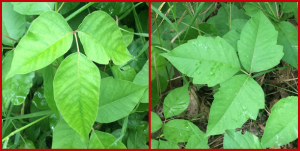




 Outdoor Hazards in Wisconsin: A Guide to Insects, Plants, and Wildlife
Outdoor Hazards in Wisconsin: A Guide to Insects, Plants, and Wildlife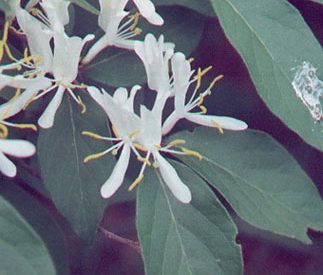 Invasive Exotic Shrub Honeysuckles
Invasive Exotic Shrub Honeysuckles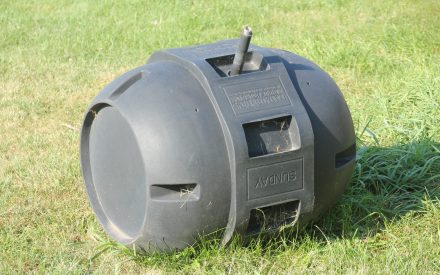 Barrel Composter: Do-It-Yourself Compost Bin Instructions
Barrel Composter: Do-It-Yourself Compost Bin Instructions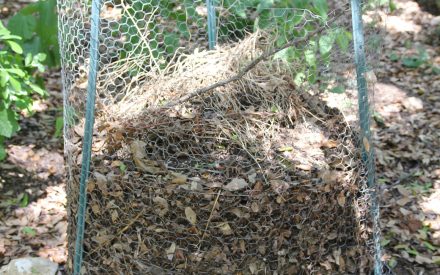 Wire Mesh Composter: Do-It-Yourself Compost Bin Instructions
Wire Mesh Composter: Do-It-Yourself Compost Bin Instructions


